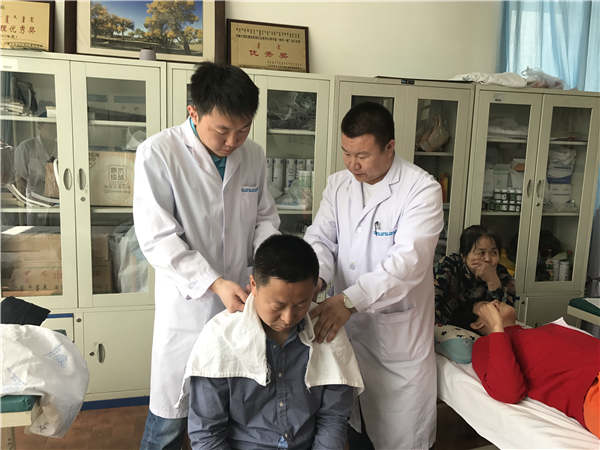 |
|
Namdaq Dampilon (left), a Russian intern, studies at the Inner Mongolia International Mongolian Hospital in Hohhot. YUAN HUI/CHINA DAILY |
Sassazov Ramazan runs a clinic in Almaty, Kazakhstan.
The 33-year-old is interested in alternative therapies around the world and has been visiting China over the last decade to study traditional Chinese medicine.
A lesser-known variety - traditional Mongolian medicine - found in the Inner Mongolian autonomous region has aroused his curiosity since he read about it online a few years ago.
"Sometimes great medicine is hidden in the grassroots," says Ramazan.
"Though I don't understand traditional Mongolian medicine now, I'm fascinated by its pharmaceutical and diagnostic methods."
During a recent visit to China, he went to the State-owned Inner Mongolia International Mongolian Hospital in Hohhot, capital of the autonomous region, to "condition" his body.
Traditional Mongolian medicine, which is generally considered to date to Genghis Khan's time, is now stepping out of a relatively small circle of practitioners to reach more people.
Namdaq Dampilon, a 24-year-old medical intern from St. Petersburg, Russia, now stays at the hospital. He is from the Bury at community, a sub-ethnic Mongol group.
"My grandfather is a doctor, and I have an emotional connection with my ethnic roots," he says. "This led me to Inner Mongolia. I want to be a doctor of traditional Mongolian medicine, also as a way to inherit the culture."
Dampilon recalls his surprise at seeing a patient walk after being treated only with acupuncture and massage.
"Traditional Mongolian medicine has its advantages in curing stomach, lung and orthopedic diseases," he says.
"But we need to learn Western medicine at the same time to mix advantages."